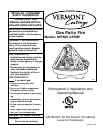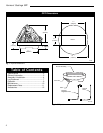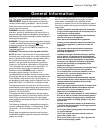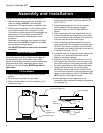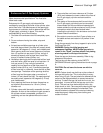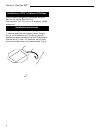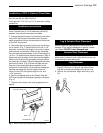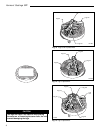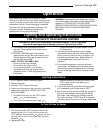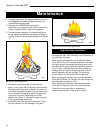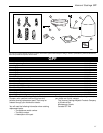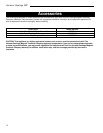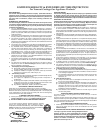Special offers from our partners!

Find Replacement BBQ Parts for 20,308 Models. Repair your BBQ today.

5
Vermont Castings GPF
Enclosures for LP Gas Supply Systems
If you build an enclosure for an LP gas cylinder, follow
these recommended specifications. You must also
follow local codes.
Enclosures for LP gas supply cylinders shall be
ventilated by openings at the level of the cylinder valve
and at floor level. The effectiveness of the opening(s)
for purposes of ventilation shall be determined with the
LP gas supply cylinder(s) in place. This shall be
accomplished by one of the following:
1. One side of the enclosure shall be completely open;
or
2. For an enclosure having four sides, a top and
bottom:
a. At least two ventilation openings at cylinder valve
level shall be provided in the side wall, equally sized,
spaced at 180 degrees (3.14 rad), and unobstructed.
Each opening shall have a total free area of not less
than 1/2 square inch per pound (3.2 sq. cm/kg) of
stored fuel capacity and not less than a total free
area of 10 square inches (64.5sq. cm).
b. Ventilation opening(s) shall be provided at floor level
and shall have a total free area of not less than 1/2
inch per pound (3.2 sq. cm/kg) of stored fuel
capacity and not less than a total free area of 10
square inches (64.5 sq. cm). If ventilation openings
at floor level are in a side wall, there shall be at least
two openings. The bottom of the openings shall be
at floor level and the upper edge no more than 5
inches (127mm) above the floor. The openings shall
be equally sized, spaced at 180 degrees (3.14 rad)
and unobstructed.
c. Every opening shall have minimum dimensions so
as to permit the entrance of a 1/8 inch (3.2mm)
diameter rod.
3. Cylinder valves shall be readily accessible for hand
operation. A door on the enclosure to gain access to
the cylinder valves is acceptable, provided it is
nonlocking and can be opened without the use of
tools.
4. There shall be a minimum clearance of 2 inches
(50.8 mm) between the lower surface of the floor of
the LP gas supply cylinder enclosure and the
ground.
5. The design of the enclosure shall be such that (1)
the LP gas supply cylinder(s) can be connected,
disconnected and the connections inspected and
tested outside the cylinder enclosure; and (2) those
connections which could be disturbed when
installing the cylinder(s) in the enclosure can be leak
tested inside the enclosure.
6. Be certain to mount or set the LP gas cylinder on a
flat stable surface and restrain it to prevent it from
tipping.
Purge the gas supply line of any trapped air prior to the
first firing of the unit.
WARNING: During the initial purging and
subsequent lightings, NEVER allow gas valve to
remain in the “Open” position without first placing
a burning match on the top of the burner.
Place the logs on the burner assembly. Refer to log
placement instructions.
Test fire the unit after referring to the SAFETY
INFORMATION and Lighting Instructions found on page
9.
CAUTION: Do not leave the burner on with the
cover on.
NOTE: Carbon (soot) may build up on the surface of
the logs with heavy use. This is more likely to occur
when using LP gas. The soot should be cleaned off the
surface of the logs periodically to prevent excessive
build up. To clean the logs, be sure the fire is out, the
gas supply is turned off and the logs are cool to the
touch. The soot can then be brushed off with a dry
bristle brush or cloth. Take care while cleaning the logs
as they can become damaged if mishandled. Care
should be taken to dispose of the soot and cleaning
materials properly. Keep away from clothing and
outdoor furniture.



